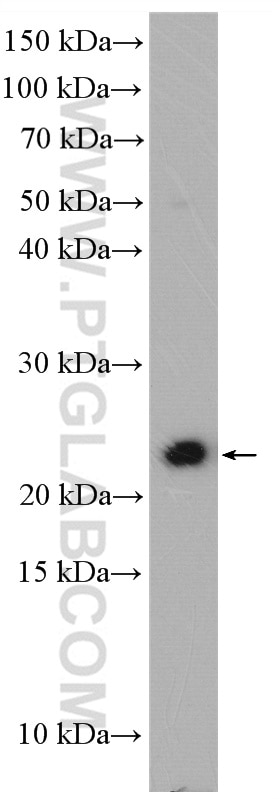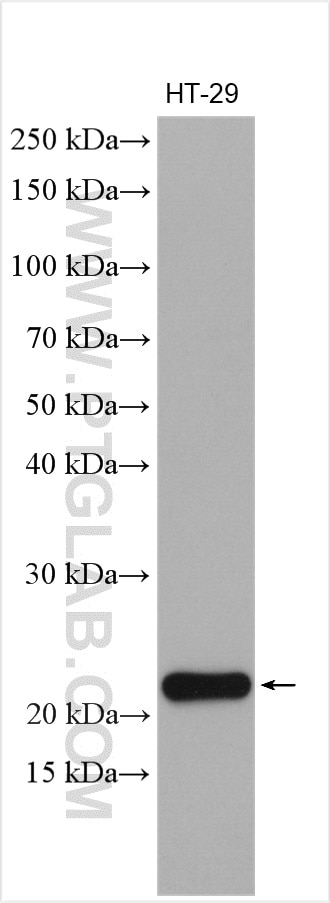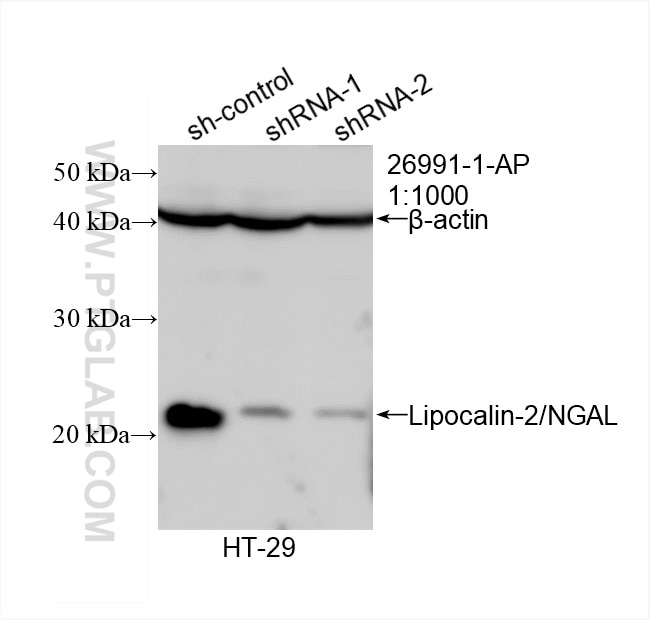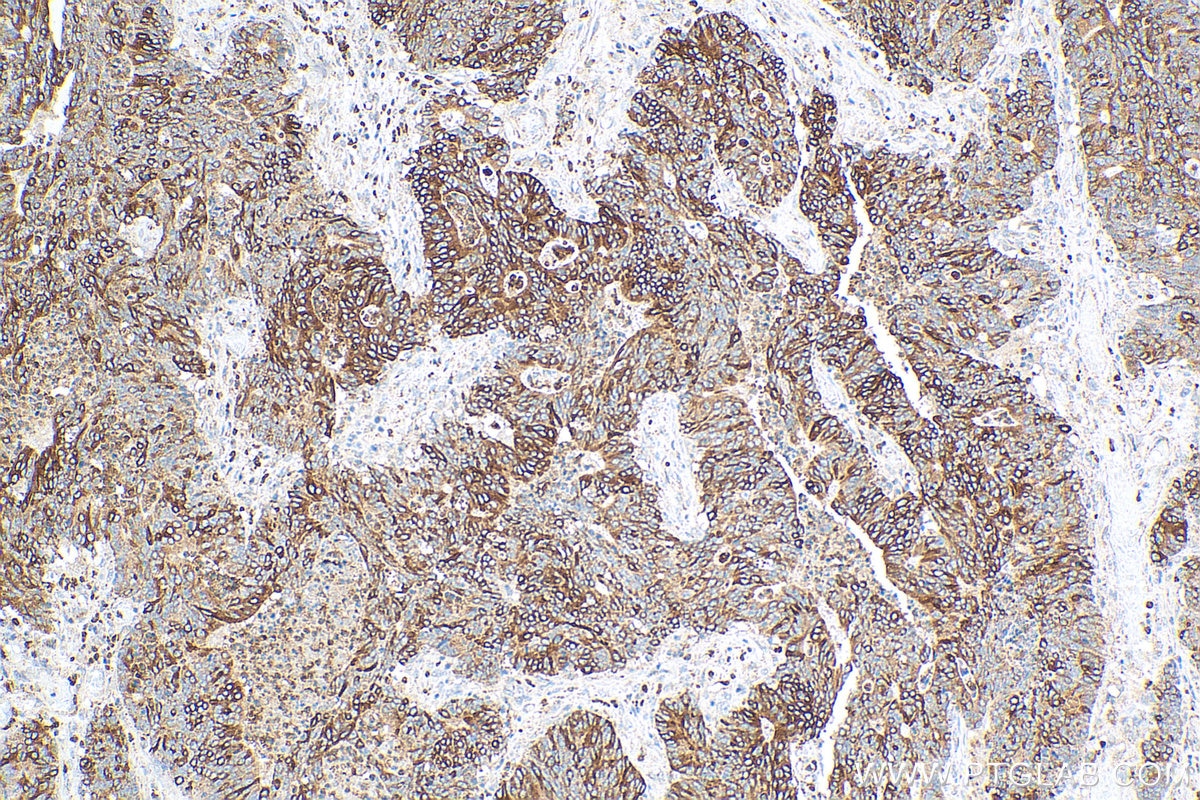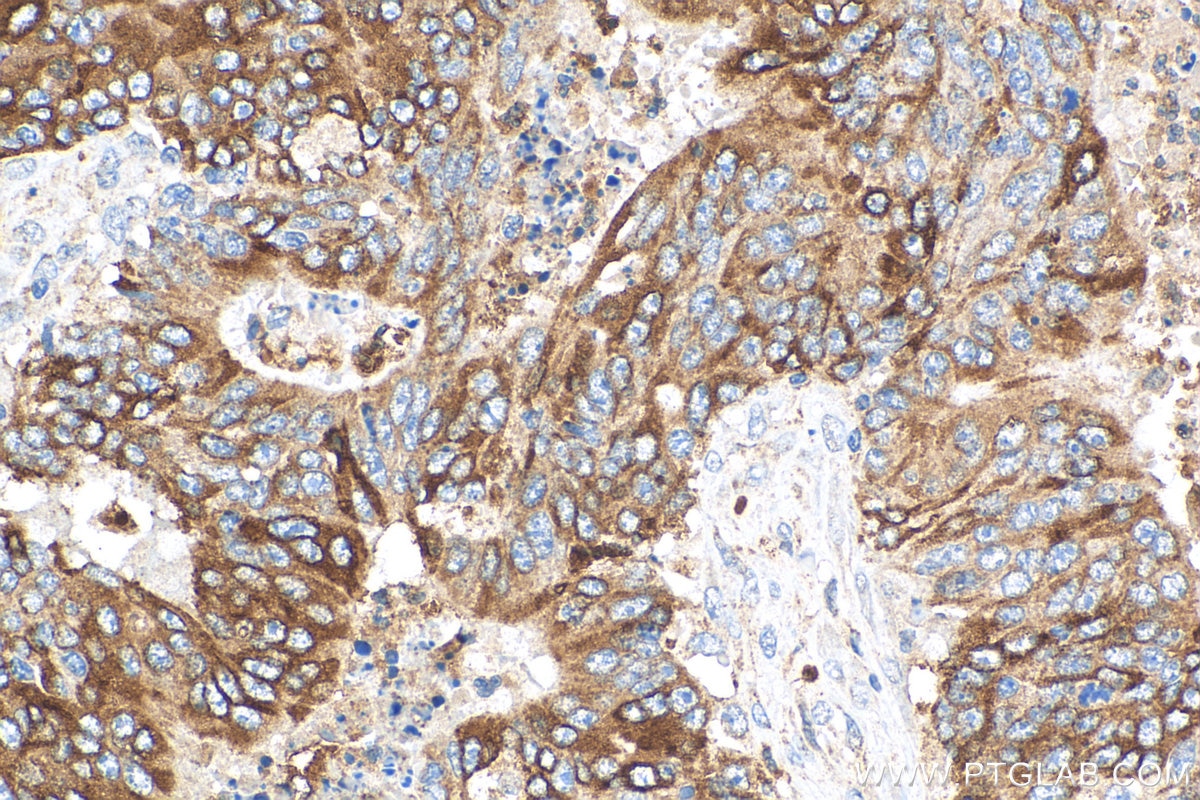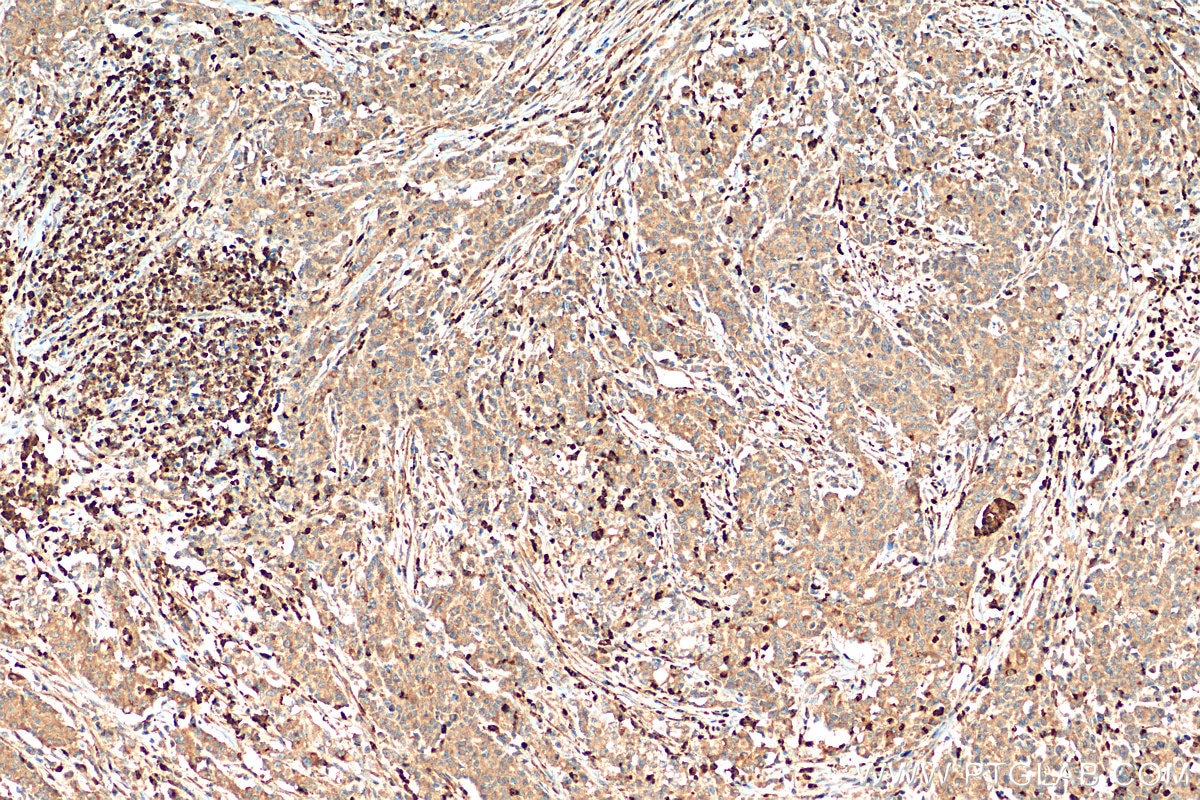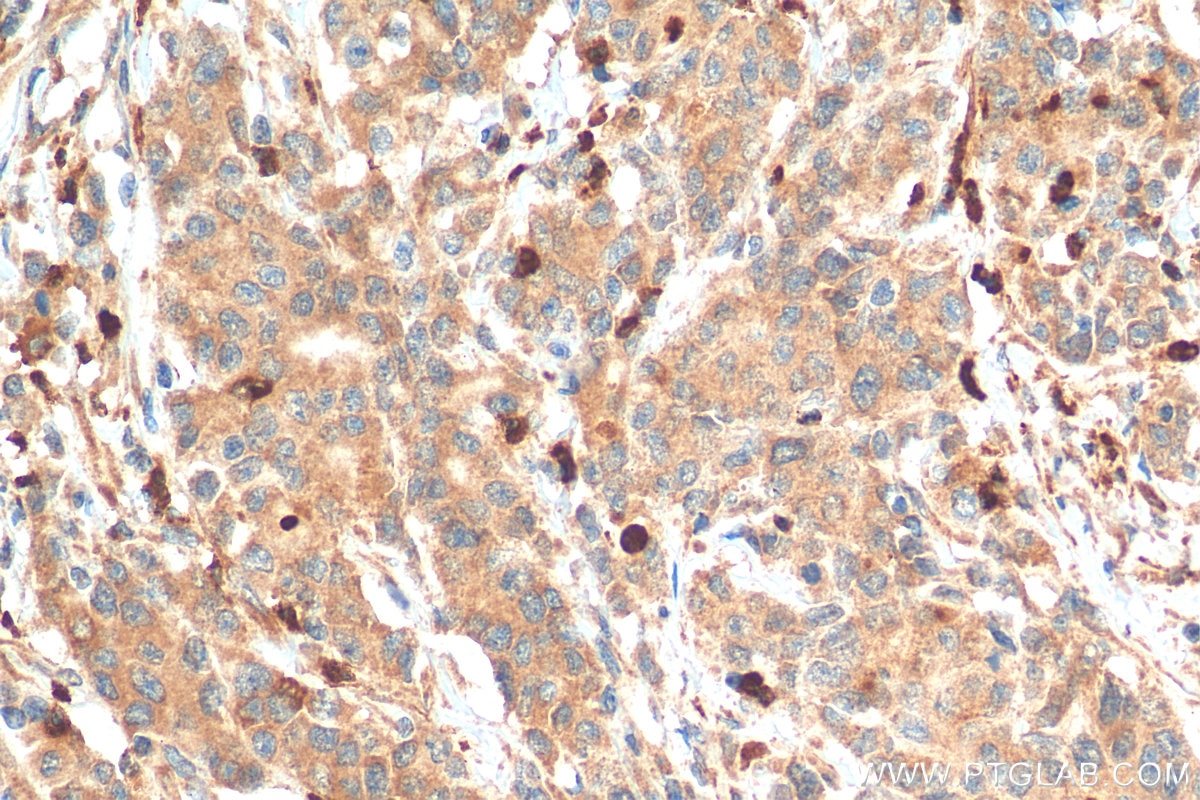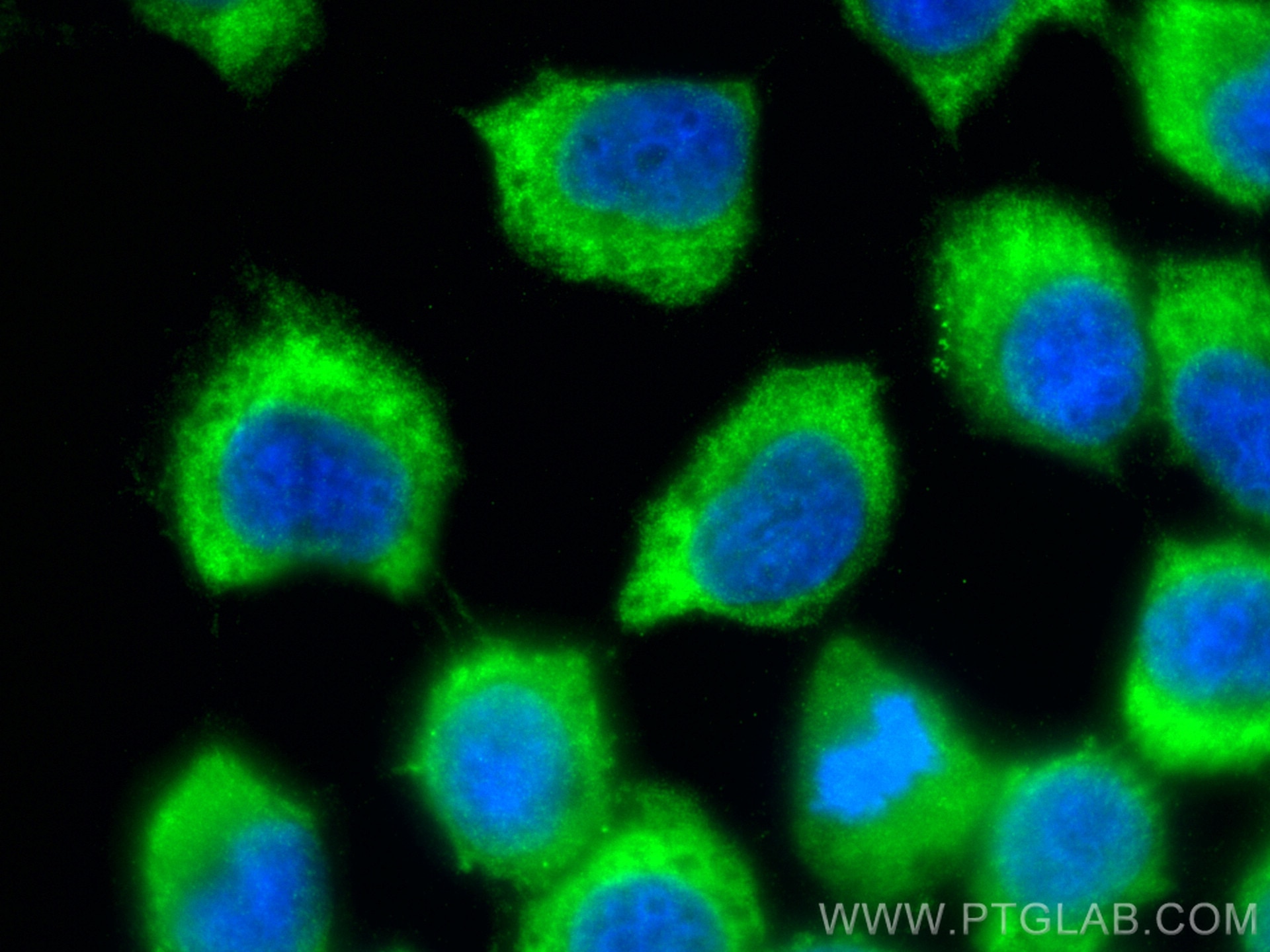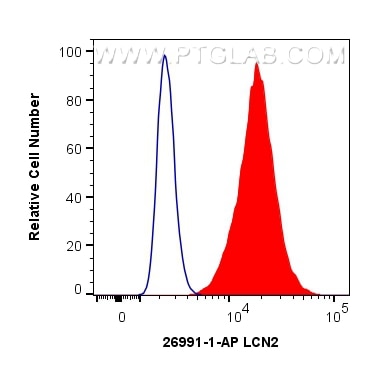- Featured Product
- KD/KO Validated
Lipocalin-2/NGAL Polyklonaler Antikörper
Lipocalin-2/NGAL Polyklonal Antikörper für WB, IHC, IF/ICC, FC (Intra), ELISA
Wirt / Isotyp
Kaninchen / IgG
Getestete Reaktivität
human
Anwendung
WB, IHC, IF/ICC, FC (Intra), ELISA
Konjugation
Unkonjugiert
Kat-Nr. : 26991-1-AP
Synonyme
Geprüfte Anwendungen
| Erfolgreiche Detektion in WB | HT-29-Zellen, human saliva |
| Erfolgreiche Detektion in IHC | humanes Kolonkarzinomgewebe, humanes Magenkrebsgewebe Hinweis: Antigendemaskierung mit TE-Puffer pH 9,0 empfohlen. (*) Wahlweise kann die Antigendemaskierung auch mit Citratpuffer pH 6,0 erfolgen. |
| Erfolgreiche Detektion in IF/ICC | A431-Zellen |
| Erfolgreiche Detektion in FC (Intra) | A431-Zellen |
Empfohlene Verdünnung
| Anwendung | Verdünnung |
|---|---|
| Western Blot (WB) | WB : 1:2000-1:10000 |
| Immunhistochemie (IHC) | IHC : 1:50-1:500 |
| Immunfluoreszenz (IF)/ICC | IF/ICC : 1:50-1:500 |
| Durchflusszytometrie (FC) (INTRA) | FC (INTRA) : 0.40 ug per 10^6 cells in a 100 µl suspension |
| It is recommended that this reagent should be titrated in each testing system to obtain optimal results. | |
| Sample-dependent, check data in validation data gallery | |
Veröffentlichte Anwendungen
| KD/KO | See 3 publications below |
| WB | See 33 publications below |
| IHC | See 12 publications below |
| IF | See 9 publications below |
Produktinformation
26991-1-AP bindet in WB, IHC, IF/ICC, FC (Intra), ELISA Lipocalin-2/NGAL und zeigt Reaktivität mit human
| Getestete Reaktivität | human |
| In Publikationen genannte Reaktivität | human |
| Wirt / Isotyp | Kaninchen / IgG |
| Klonalität | Polyklonal |
| Typ | Antikörper |
| Immunogen | Lipocalin-2/NGAL fusion protein Ag25715 |
| Vollständiger Name | lipocalin 2 |
| Beobachtetes Molekulargewicht | 25 kDa |
| Gene symbol | NGAL/LCN2 |
| Gene ID (NCBI) | 3934 |
| Konjugation | Unkonjugiert |
| Form | Liquid |
| Reinigungsmethode | Antigen-Affinitätsreinigung |
| Lagerungspuffer | PBS with 0.02% sodium azide and 50% glycerol |
| Lagerungsbedingungen | Bei -20°C lagern. Nach dem Versand ein Jahr lang stabil Aliquotieren ist bei -20oC Lagerung nicht notwendig. 20ul Größen enthalten 0,1% BSA. |
Hintergrundinformationen
Lipocalin-2 (LCN-2) is a adipocytokine also referred to as neutrophil gelatinase-associated lipocalin (NGAL). Lipocalin-2 is a circulatory protein responsible for the transportation of small and hydrophobic molecules to target organs. Lipocalin-2 is used as a biomarker for acute and chronic renal injury. It is present in a large variety of cells including neutrophil, hepatocytes, lung, bone marrow, adipose tissue, macrophages, thymus, non-neoplastic breast duct, prostate, and renal cells. Different functions have been associated with Lipocalin-2, including antibacterial, anti-inflammatory, and protection against cell and tissue stress (PMID:34463264).
Protokolle
| PRODUKTSPEZIFISCHE PROTOKOLLE | |
|---|---|
| WB protocol for Lipocalin-2/NGAL antibody 26991-1-AP | Protokoll herunterladen |
| IHC protocol for Lipocalin-2/NGAL antibody 26991-1-AP | Protokoll herunterladenl |
| IF protocol for Lipocalin-2/NGAL antibody 26991-1-AP | Protokoll herunterladen |
| FC protocol for Lipocalin-2/NGAL antibody 26991-1-AP | Download protocol |
| STANDARD-PROTOKOLLE | |
|---|---|
| Klicken Sie hier, um unsere Standardprotokolle anzuzeigen |
Publikationen
| Species | Application | Title |
|---|---|---|
J Neurol Neurosurg Psychiatry Molecules of senescent glial cells differentiate Alzheimer's disease from ageing | ||
Cell Chem Biol 3D two-photon brain imaging reveals dihydroartemisinin exerts antiepileptic effects by modulating iron homeostasis. | ||
Oxid Med Cell Longev Sirtuin 1 Induces Choroidal Neovascularization and Triggers Age-Related Macular Degeneration by Promoting LCN2 through SOX9 Deacetylation.
| ||
Gastric Cancer Lipocalin-2 negatively regulates epithelial-mesenchymal transition through matrix metalloprotease-2 downregulation in gastric cancer.
| ||
Biochim Biophys Acta Mol Basis Dis Lipocalin-2-mediated intestinal epithelial cells pyroptosis via NF-κB/NLRP3/GSDMD signaling axis adversely affects inflammation in colitis | ||
iScience Mutational burden of XPNPEP3 leads to defects in mitochondrial complex I and cilia in NPHPL1 |
